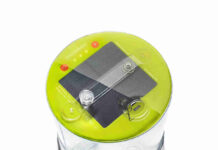
By tweaking the smallest of parts, a trio of University at Buffalo engineers is hoping to dramatically increase the amount of sunlight that solar cells convert into electricity.
With military colleagues, the UB researchers have shown that embedding charged quantum dots into photovoltaic cells can improve electrical output by enabling the cells to harvest infrared light, and by increasing the lifetime of photoelectrons.
Mitin, Sergeev and Vagidov have founded a company, OPtoElectronic Nanodevices LLC. (OPEN LLC.), to bring the innovation to the market.
The idea of embedding quantum dots into solar panels is not new: According to Mitin, scientists had proposed about a decade ago that this technique could improve efficiency by allowing panels to harvest invisible, infrared light in addition to visible light. However, intensive efforts in this direction have previously met with limited success.
The UB researchers and their colleagues have not only successfully used embedded quantum dots to harvest infrared light; they have taken the technology a step further, employing selective doping so that quantum dots within the solar cell have a significant built-in charge.
This built-in charge is beneficial because it repels electrons, forcing them to travel around the quantum dots. Otherwise, the quantum dots create a channel of recombination for electrons, in essence “capturing” moving electrons and preventing them from contributing to electric current.
The technology has the potential to increase the efficiency of solar cells up to 45 percent, said Mitin, a SUNY Distinguished Professor. Through UB’s Office of Science, Technology Transfer and Economic Outreach (STOR), he and his colleagues have filed provisional patent applications to protect their technology.
“Clean technology will really benefit the region, the state, the country,” Mitin said. “With high-efficiency solar cells, consumers can save money and providers can have a smaller solar field that produces more energy.”
Mitin and his colleagues have already invested significant amounts of time in developing the quantum dots with a built-in-charge, dubbed “Q-BICs.” To further enhance the technology and bring it to the market, OPEN LLC is now seeking funding from private investors and federal programs.



